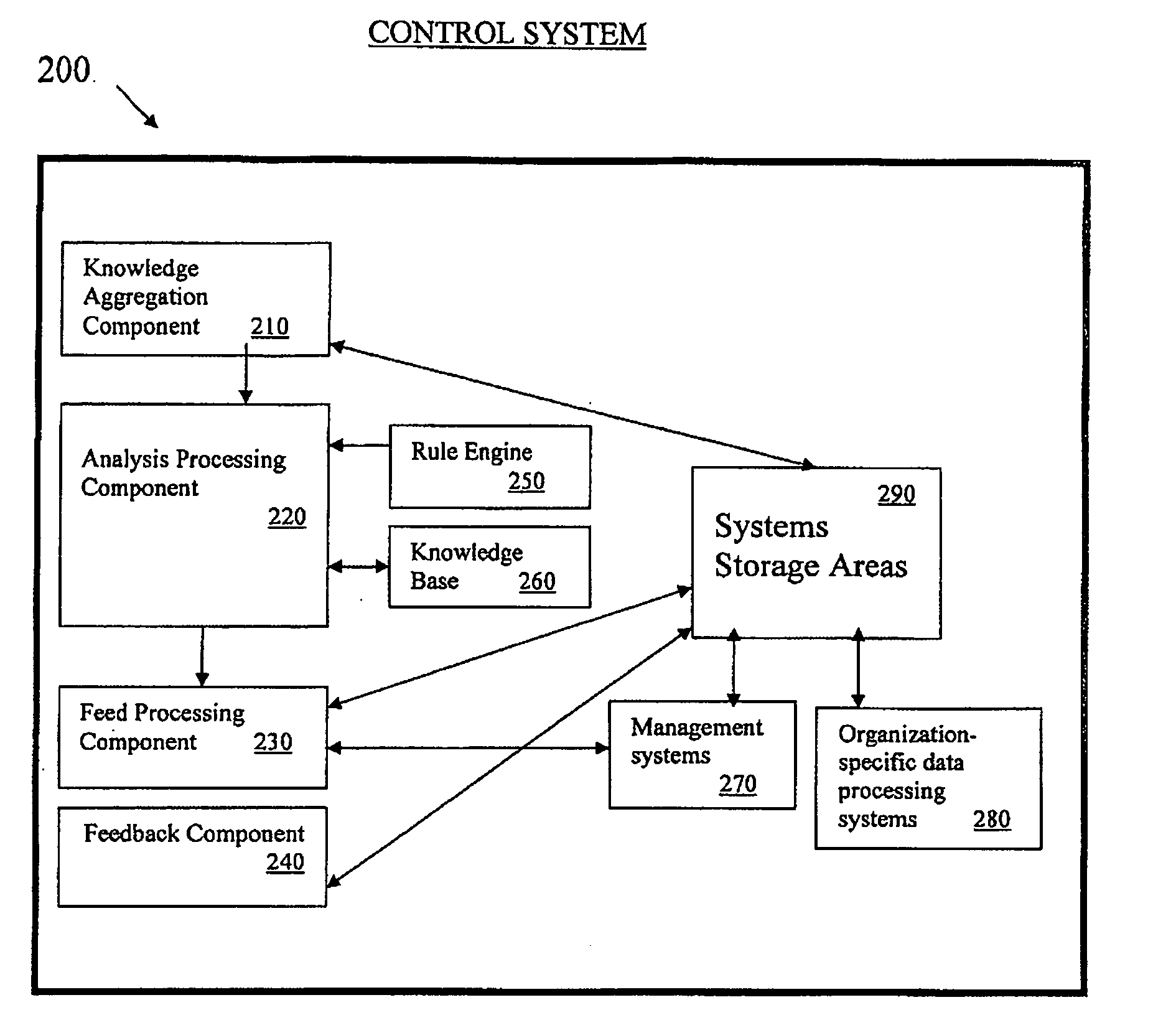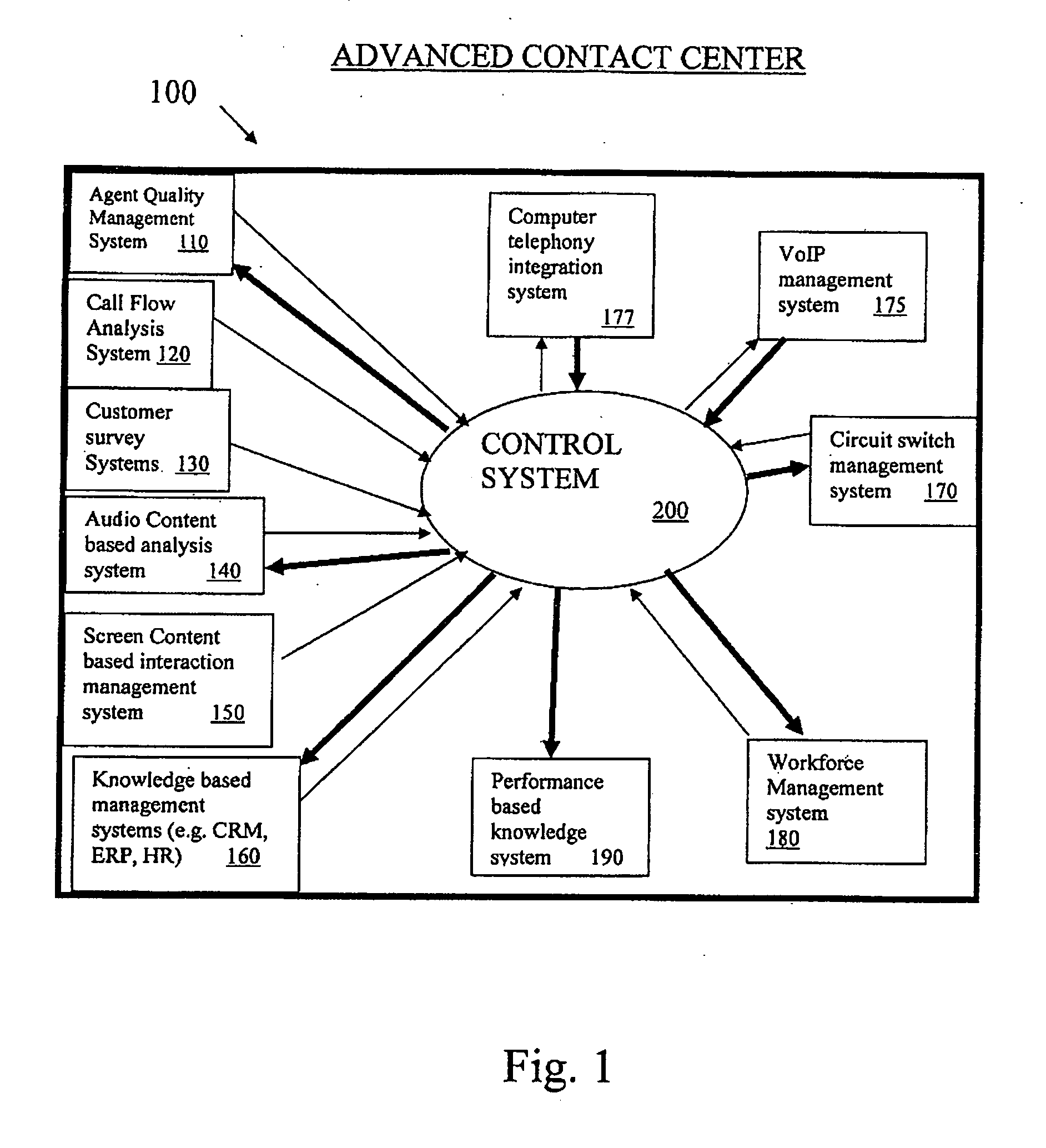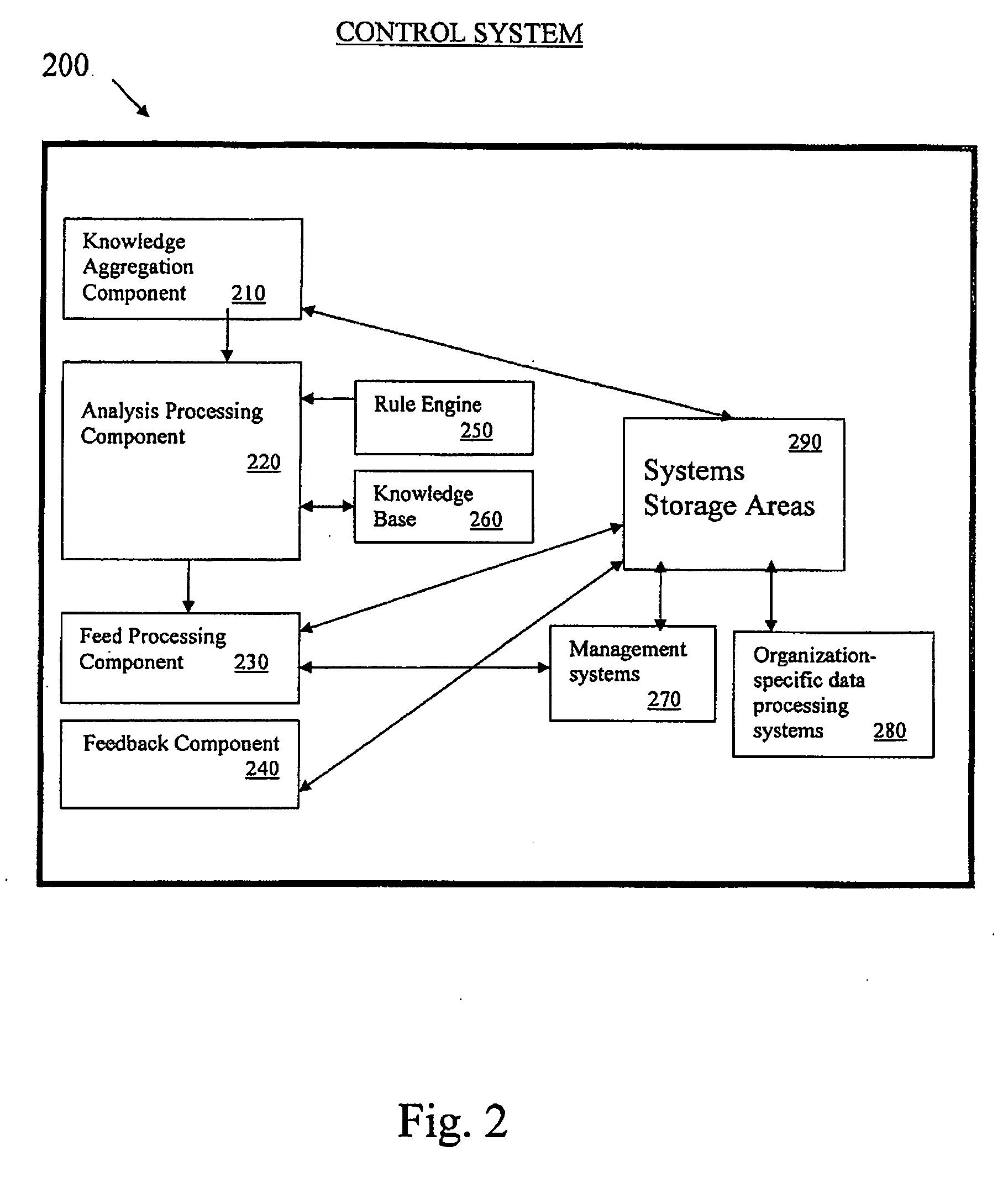[0012] The present invention provides a method and a
system that takes coexisting management systems and uses the results drawn by each of the
management system's inherent capabilities to the benefit of the others. The
system takes the output of each of these systems, for example the
score given to an agent using the evaluation done with a
quality management system, combined with the output of an
emotion detection algorithm on audio (which is a content-based
interaction management engine that is activated on the interaction), is fed into a workforce
management system to produce an improved skill-based workforce management system. An agent with high scoring (e.g. a supervisor gave him a high
score in the evaluation form), the agent emotion level detected during his past interactions with customers together with the results produced from a word /
sentence spotting engine indicating politeness and speech adherence, and maybe more information drawn from the CRM
database and the agent's eLearning scored results, all would indicate agent
skill level. The aggregation of this gathered knowledge is provided as an input into the workforce management thereby enriching the workforce management
database with new information on the agent skills. A
by product from this update allows, the workforce management system to use this input as to better match its agents to projects. An example of such a use is to match the most skilful agents to
handle an important project by taking into account the existing agent profile together with constant updates of his / her performance monitored by other management systems.
[0014] The solution further presents the use of QM results together with both content-based analysis information and
work force management (WFM)
system information, which together provide information relating to an agent's skills. The aggregated information coming from the QM system, content based analysis and WFM can be used for skill based routing of calls, thus upgrading the efficiency of a call center, for example, the routing of calls for a specific
dialer will be done according to the available agents skills and not only on availability basis as done today. In the present solution the call center is provided with information regarding each of the agents to intelligently distribute calls.
[0016] In cases where a specific number (e.g. vector
directory number (VDN)) is dedicated to a specific campaign, usually an
automatic call distribution system (ACD) is programmed to find an available agent from a specific group to
handle a call, for example the first agent to become free. Typically a call pending in the ACD
queue is managed as in a first in first out (FIFO) buffer. Our solution is aimed for a smart ACD's predictive
dialer, which can be configured to operate with compliance to the need for skill based routing, so as to receive inputs on agent's skills and while operating, distribute calls nonrandom as to give more incoming calls to the higher skilled agents (agent with higher productivity) thereby reducing the
waiting time for a customer, and higher performance for the organization.
[0017] The aggregating of information generated by one management system whether it is
computer telephony integration system (CTI) based information, content based derived information, workforce management information and the like, “digested” for the benefit of the other coexisting management system to produce higher performance of the receiving one and by virtue contributing to the overall performance of the organization / enterprise. Further more the solution gives managers the tools to better evaluate agent capabilities, getting better insight analyzing all aggregated information coming from each and everyone of the management systems. This allows the mangers to reward agents according to their real performance.
[0018] In an exemplary embodiment of the invention, the solution presented herein describes a new concept that combines information aggregated from one management system and fed to the other management systems together with describing a feedback mechanism which improves the performance of each of the management systems, and of the overall performance of management systems to the benefit of both customers and the enterprise.
[0020] In an exemplary embodiment of the invention, the system uses information discovered by one management system (e.g. the
quality management system, CTI information, workforce management and aggregations of their activities based on
data mining capabilities) to address the work done by other management systems in the
contact center (e.g., predictive dialers,
queue management, agent training).The ability to aggregate the knowledge for intelligent
automatic control of work, allows to function more intelligently and thus become productive at lower costs, improve
quality of service and better
handle resources.
 Login to View More
Login to View More  Login to View More
Login to View More 


